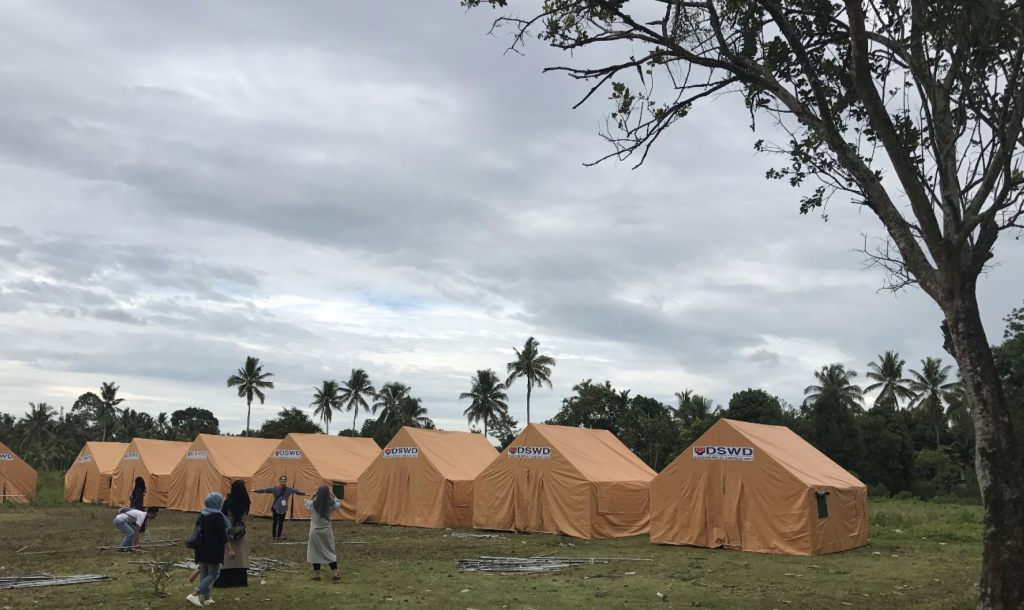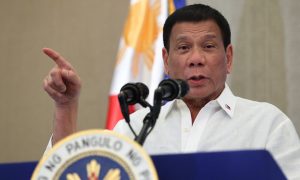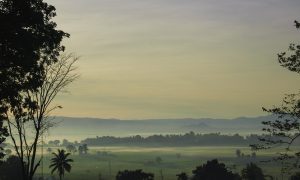On 17 October, President Rodrigo Duterte declared the “liberation of Marawi” following the military assault that killed Omar Maute and Isnilon Hapilon, the two militant leaders who mounted the siege. Defense Secretary Delfin Lorenzana subsequently ordered the termination of combat operations, an indication that government forces have fully reclaimed the city.
But crushing the militant heads and gaining full control of the city is a military victory against a violent extremist group; it does not mean that violent extremism has been brought to an end. As I’ve argued previously at New Mandala, heavy handed use of military firepower such as heavy artillery and airstrikes—which have indiscriminately swept away entire communities—can trigger spin-off extremist movements under new leaders who are even more difficult, dangerous, and deadly than their predecessors.
My recent work with civilian evacuees in Marawi reemphasised that extremism can emerge if government authorities continue to fall short in addressing the concerns of the displaced Maranao population. The Marawi crisis affected more than 300,000 Maranao residents, of whom nearly 80% are home-based evacuees—that is, staying with host families, most likely their friends or relatives. Others remain housed in cramped evacuation centres that suffer from difficult living conditions. Out of the 96 barangays (villages) in the city, 33 of these are believed to be heavily damaged because they are located in the main battle areas. Government programs addressing the plight of the evacuees during the height of the conflict have been limited, leaving far too many unclear about their future.
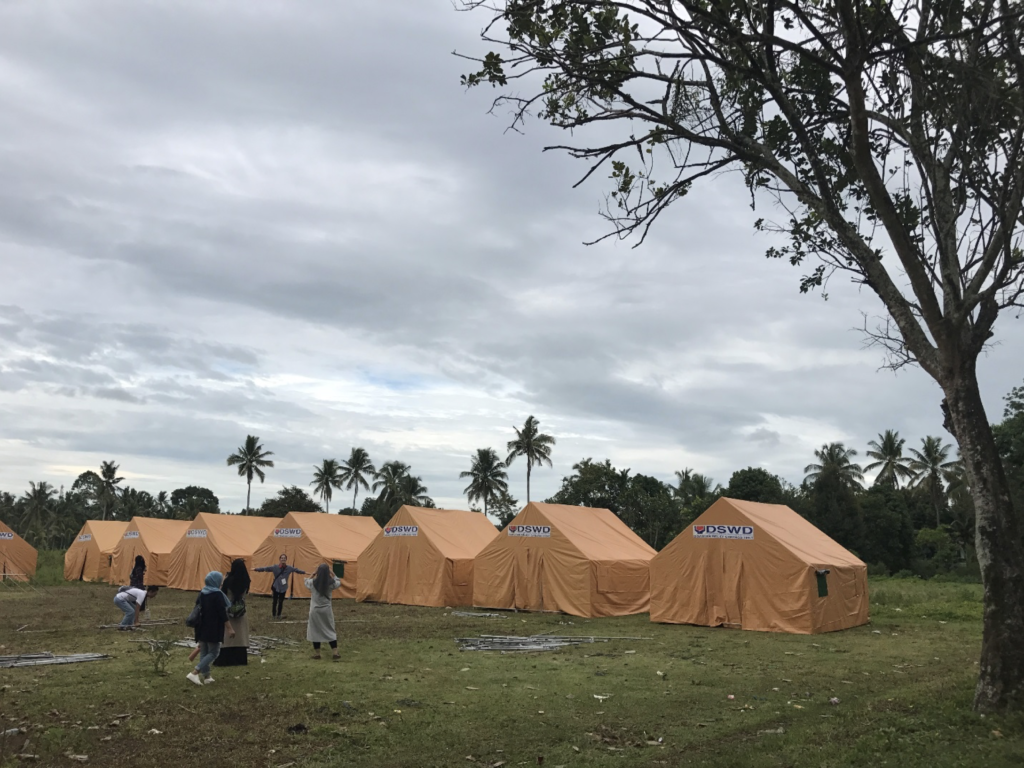
Marawi evacuees who became relief volunteers after the siege visit their transitional shelters in Barangay Pacalundo, Municipality of Balo-i, Lanao del Norte (Photo: Haironesah Domado)
Now that the fighting is over, this future seems even bleaker. Assistance for rebuilding so far appears to lack the needed visibility, support, and acceptance by the evacuees. Recently, displaced residents in nine barangays in Marawi have been allowed to return to their homes, which are now under the control and declared safe by the military. While this is a major development, longer term security risks abound if, the process of returning evacuees feeds perceptions of discrimination, human rights abuses, and land dispossession.
As stated in my previous post, displaced civilians whom I have spoken to in Marawi have blamed both the militants and government forces for the destruction of their city. Now that the militant leaders are dead, rigid security responses against the evacuees can create the sort of misimpressions that reinforce the grievance narrative promoted by the Maute Group to justify violence.
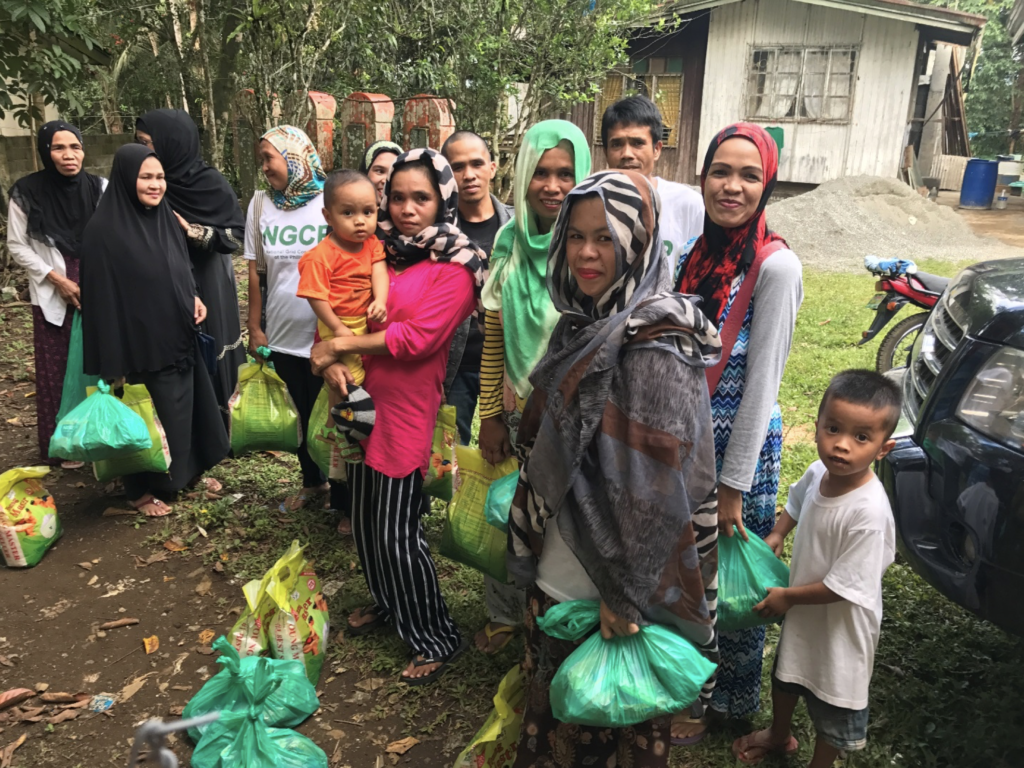
Some of the home-based evacuees in Barangay Bangko, Municipality of Balo-i, Lanao del Norte received relief goods provided by RIDO. (Photo: author)
For example, the return plan for the evacuees may include profiling the Maranao returnees to ensure that they are legitimate residents of Marawi. This can be problematic since amajority of the evacuees are home-based, and thus often dispersed and difficult to reach and identify. The immense pressure to have them comply with temporary measures including obtaining safe conduct passes to cross through military checkpoints, or acquiring barangay identification cards to gain entry to their communities, as well as the prospect of “preserving the ruins” in Marawi to symbolise the human cost of war as a lesson to future generations, are highly sensitive issues for Maranao evacuees. While profiling and securing documentations is intended to uphold security, these measures can also inadvertently impose arbitrary restrictions on returnees’ movements. Since communities have been polarised after the siege, the issuance of identification documents by an elected barangay leader can also put the evacuees at risk of being perceived as military informants, or allies to a particular political clan.
In practice, the conservation of ruins, which is presumably meant to recognise heroism or promote community resiliency, may encroach upon cultural sensitivities such as the Maranao’s maratabat, a code of conduct on how one should treat the self, family, and the community that is deeply embedded in Maranao culture. Authorities run the risk of making Maranao returnees feel they are being treated by actual outsiders as strangers in their own homes.
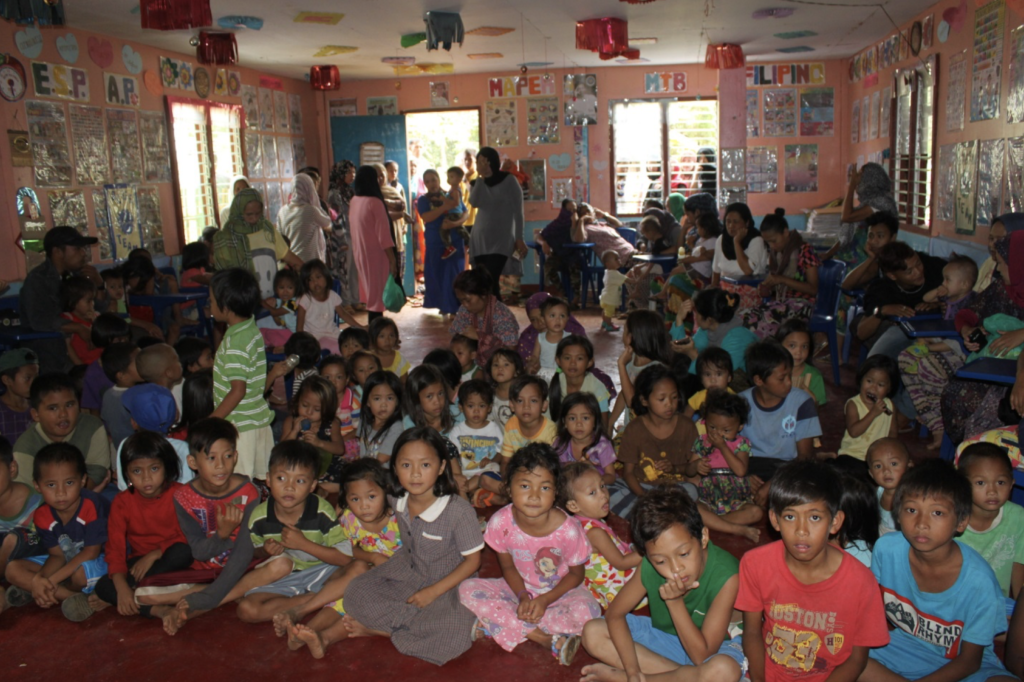
Children of home-based evacuees in Municipality of Saguiran, Lanao del Sur, waiting for relief assistance in a small classroom in Barangay Lumbac Toros, Municipality of Saguiran. (Photo: author)
Meanwhile, with Martial Law still in effect in Mindanao until the year’s end, allegations of illegal arrests, torture, and extrajudicial killings of civilians suspected to be extremist group members or sympathisers—whether factual or not—will also deepen the mistrust that will increase evacuees’ susceptibility to extremist groups’ appeals. Displaced civilians enraged about the theft and lootings of their properties by the Maute Group may also harbour frustrations and resentment towards government authorities given the accusations of “illegal searches and seizures” by law enforcement agencies, such as the police and military, in civilian homes and commercial establishments.
Revelations that a huge part of Marawi is covered under “military reservation” have also stoked suspicions of a land grab among evacuees. It emerged that the military appears to have legal rights to 6,000 of the 8,000 hectares of land in Marawi, though it asserts that it would “not claim any land that it does not need”. But this is not enough to allay the sentiment that prevails among the evacuees, especially when they observe the expansion of resettlement sites, construction of transitional shelters, and the plan for a “new military camp” amid the absence of definite information about return or resettlement plans for them.
For instance, many evacuees I met are still confused about whether they can return to their homes, or whether they will have to stay in transitional shelters for certain period—or indeed if they no longer have the homes or lands to return to, and will have to be relocated permanently in the resettlement areas. It is important to remember that the history of unfair imposition of state policies—which pushed the Muslims in Mindanao out of their ancestral domain—runs deep in Muslims’ psyche. The political narrative of land dispossession has been exploited by violent extremist groups to lure and recruit disaffected Moro youth and disgruntled combatants who are getting frustrated with the sluggish progress made in the peace process.
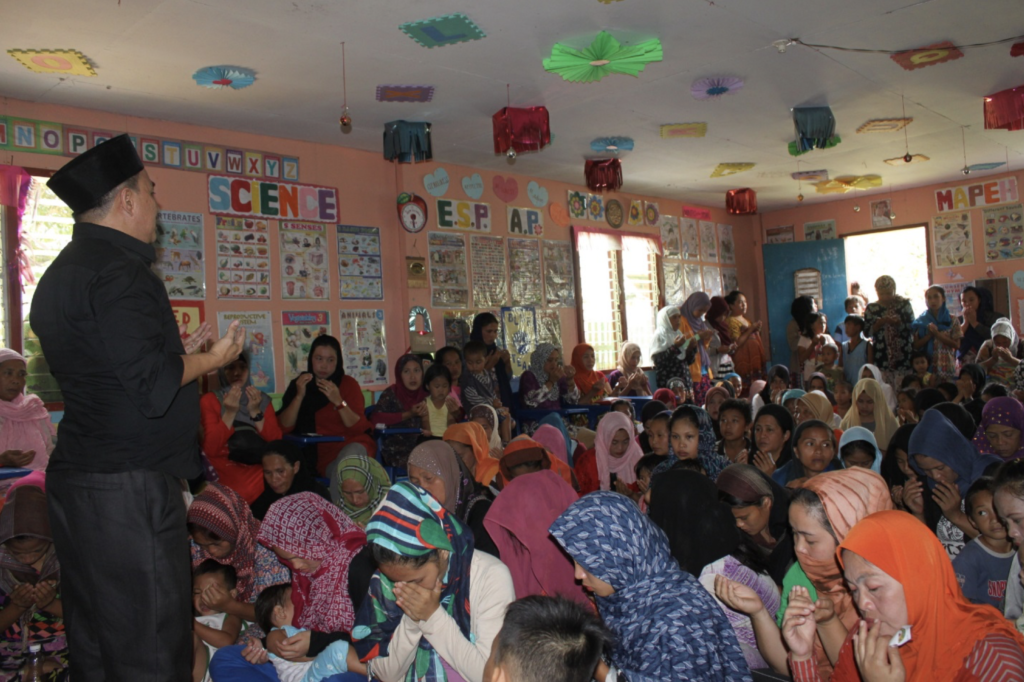
Mr. Hamidullah Atar, the Sultan of Marawi, led the prayer among women who are home-based evacuees gathered in a small classroom in Barangay Lumbac Toros, Municipality of Saguiaran, Lanao del Sur. (Photo: author)
As the transition to some sort of peace officially begins, challenges on the ground that go beyond physical reconstruction are becoming more obvious. As Task Force Bangon Marawi was reorganised to reflect rebuilding priorities, people’s expectations for government to deliver a wide array of services are increasingly felt. Many of the home-based evacuees are still waiting for any form of government assistance. While it will understandably take time for the government to prepare and lay down the return and rehabilitation plan for the evacuees, the variety of issues I’ve described in this post speak to how evacuees have been treated as passive victims of the crisis, and not as a participants to the rebuilding process who have the capacity to find and secure solutions to the problems affecting them.
The authorities face a ticking clock. It is important to emphasise that the risk for evacuees to be radicalised is especially heightened when they feel ignored, undermined, alienated, and excluded. The recent emergence of a new armed group, the Meranao Victims Movement—which claims to represent the rights of the displaced Maranaos—is all that’s needed to illustrate the consequences of failing to involve and engage evacuees in addressing their own needs.
• • • • • • • • • •
The views expressed here are the author’s own and not necessarily those of her employer.
 Facebook
Facebook  Twitter
Twitter  Soundcloud
Soundcloud  Youtube
Youtube  Rss
Rss 